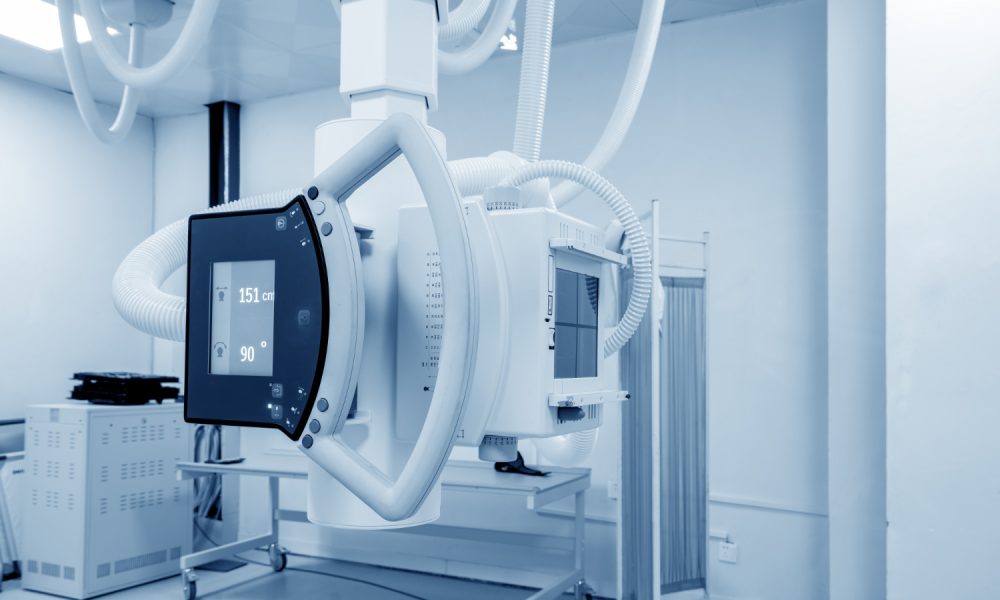
Selection process: ESG as a filter, innovation as a compass (Photo: Frerpik, Gyn9039)
The Bellevue Medtech & Services Fund (ISIN: LU0323578627) is not a vehicle for a wide scatter, but a precision instrument for everyone who specifically wants to invest in the most innovative actors in the MedTech industry. Since 2009, portfolio managers Stefan Blum and Marcel Fritsch have managed the fund with a clear philosophy: “Medical technology is not a by-product of the healthcare industry, but their innovative core”.
In contrast to many competitor products, the fund deliberately does not contain any pharmaceutical values in the portfolio. The advantage: Medtech companies are less affected by patent drains, price struggles with insurers or political regulations. Instead, you benefit from long-term partnerships with hospitals and recurring sales through device maintenance or software updates.
Selection process: ESG as a filter, innovation as a compass
The fund’s investment universe goes through a two -stage filter process. First of all, only companies are taken into account that Strict ESG criteria Fulfill: supply chains without child labor, CO₂ reduction plans in production and transparency in clinical studies.
Subsequently, a fundamental analysis of medical benefits, the savings potential in the healthcare system and the market volume of the products are evaluated. The result is a concentrated selection of around 40 titles-including pioneers such as Edwards Lifesciences, whose minimally invasive heart valves extend over 150,000 patient lives every year, or room biomet, which revolutionizes the orthopedic with patient-specific implants from the 3D printer.
Years of outperformance
The fund’s figures speak for themselves: Since the edition in September 2009, the Bellevue Medtech & Services Fund has achieved an overall performance of 565 percent – this corresponds to an average annual return of 13.4 percent. For comparison: The secture average of the Healthcare/Pharma stock funds only increased by 360 percent in the same period. In the annual view, the fund shares increased by 20 percent, and around 8 percent in the current year.
Even in difficult market phases, the fund is robust: during the interest turn in 2022, it only lost 9 percent, while many tech and biotech values collapsed by 30 to 40 percent. Success is based on a mixture of long-term trends such as the aging population and targeted bets on niche players such as Alcon, a spin-off by the Swiss pharmaceutical company Novartis. The company specializes in research, development, production, sales and sale of a comprehensive range of eye care products.
Costs: High fees – justified?
Active management has its price: With a total cost rate (ter) of 1.8 percent, the Bellevue fund is significantly more expensive than the passive Ishares US Medical Devices ETF (0.25 percent ter). In addition, there is an output of up to 5 percent, which also increases the entry. But the numbers relativize the criticism: the Total Expense Ratio is already included in the performance of a fund. This means that if investors look at the performance of a fund, they already see the influence of the TER on the return achieved.
If you were to withdraw the output surcharge from the historic annual return of 13.4 percent, the net operance would still be well above the industry average. In addition, the fund managers argue that the intensive research and the ESG examination minimize risks-for example by excluding companies with controversial business practices.
Risks: geographical focus and regulatory challenges
A significant weakness of the Bellevue Medtech & Services Fund is its pronounced geographical concentration. With 83 percent of the portfolio that is invested in US companies, as well as 7 percent in Switzerland and 4 percent in France, the Asian and emerging markets are practically completely excluded.
This one -sided orientation harbors different risks. A weakening of the US dollar could have a negative impact on the return of European investors. In addition, there is a risk of regulatory tightening, for example through stricter approval procedures of the FDA, comparable to the European Medical Device Regulation (MDR).
In addition, technological change threatens: Start-ups in the field of AI-based diagnostics could compete with established medical technology companies.
Despite these challenges, the fund convinces with a clear investment approach that specifically relies on companies whose products have been proven to contribute to reducing costs in the healthcare system – for example through shortened hospital stays in minimally invasive interventions of intuitive surgical or preventive early detection solutions from Exact Science.
Basic information on the fund:
- Emittent: Waystone Management Company
- Investment consultant: Bellevue Asset Management
- WKN: A0RP27
- ISIN: LU0433846515
- Identification date: September 28, 2009
- Fund currency: EUR
- Fund size: approx. $ 230 million
- Distribution type:
Conclusion: Who is the fund suitable for?
The Bellevue Medtech & Services Fund is not for convinced ETF fans. Rather, he is aimed at strategic investors who are willing to accept higher fees in order to benefit from the targeted selection of title of an experienced management team. With its focus on ESG-compliant innovations and cost-efficient medical technology, the fund addresses long-term investors in particular who want to use demographic change and digitization as a growth driver.
The fund also offers an interesting option for those who want to invest in medical technology without having a pharmaceutical exposure in their portfolio. In addition, it is suitable for supporters of the sustainability idea, which value ethical supply chains and CO₂ reduction. In a world with rapidly increasing health expenditure, the fund remains an investment in a simple truth: innovations in medicine are always used – and paid for.
Disclaimer:
No investment advice. No call to buy or sell securities.
